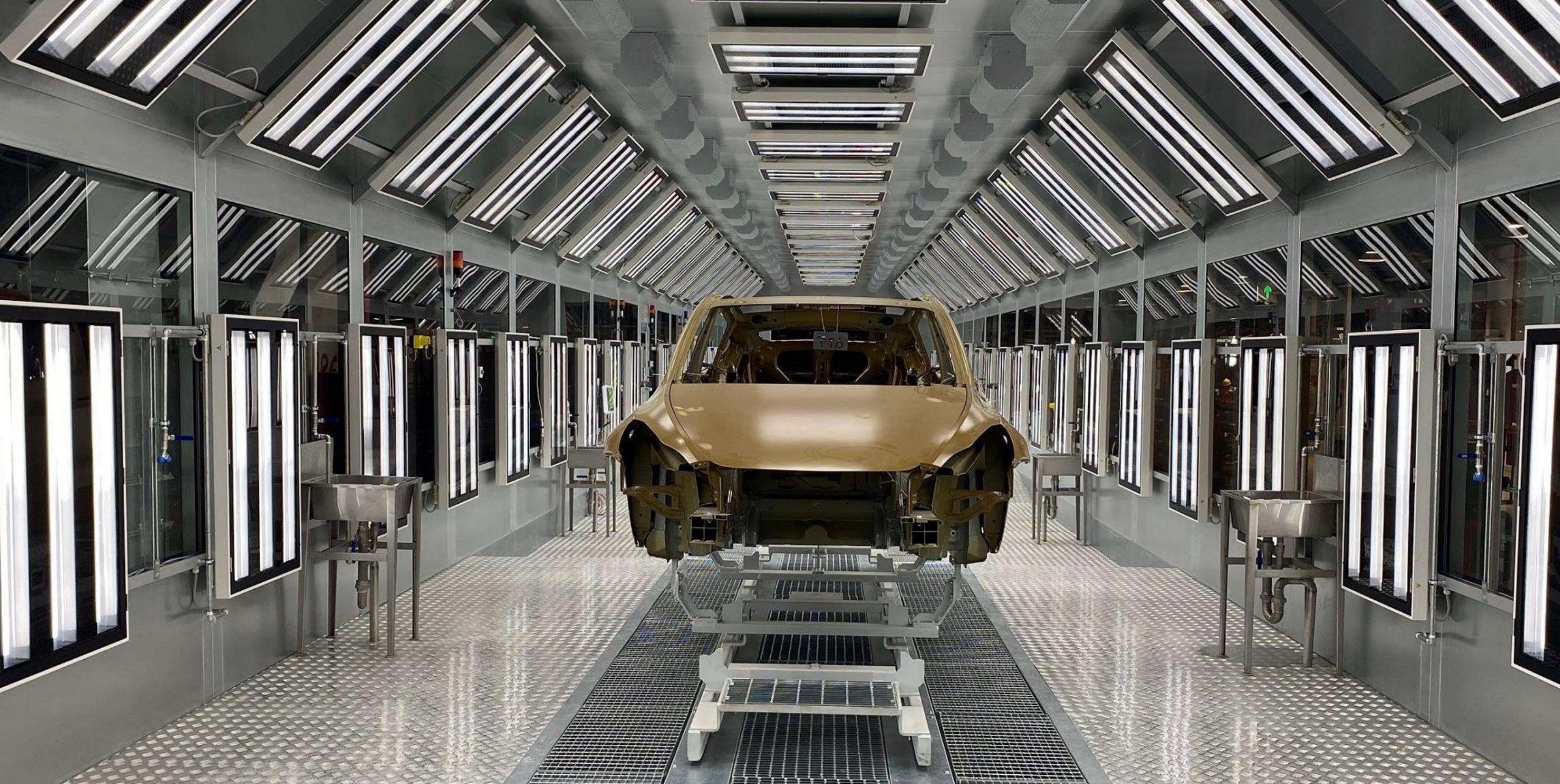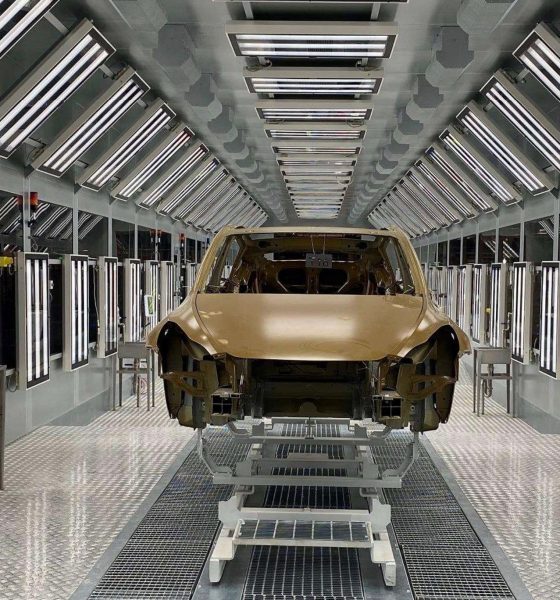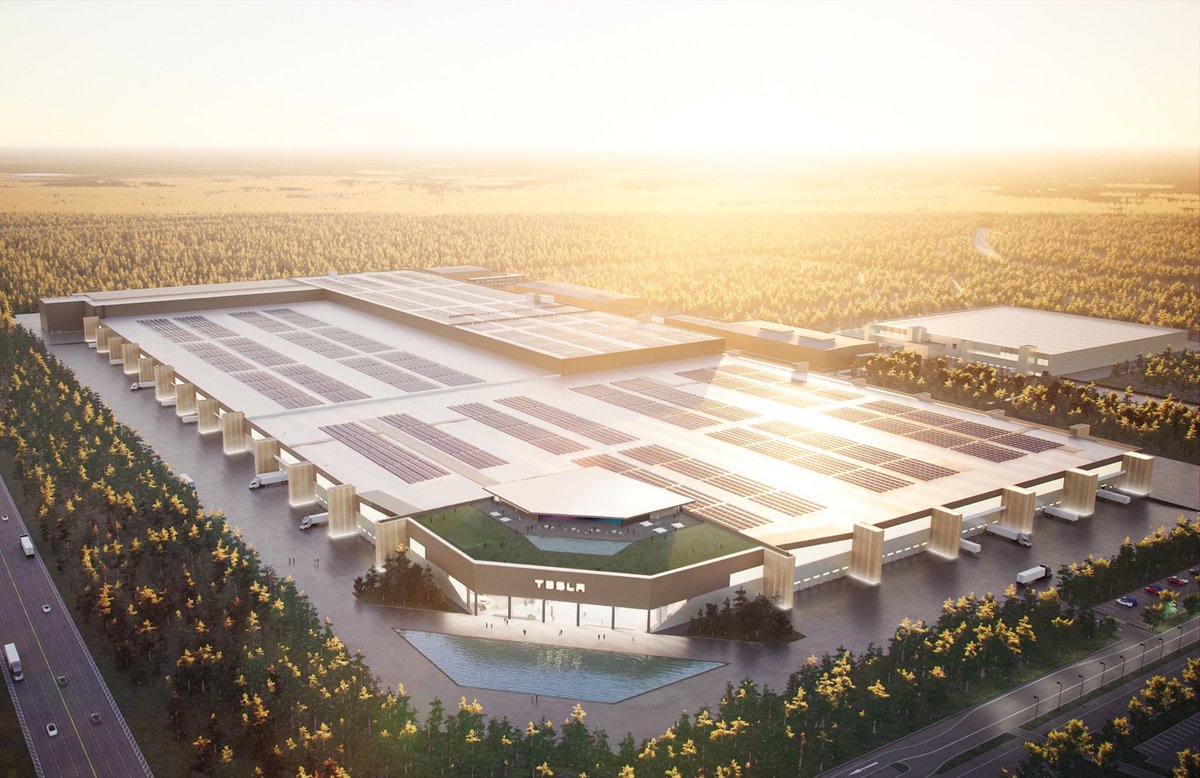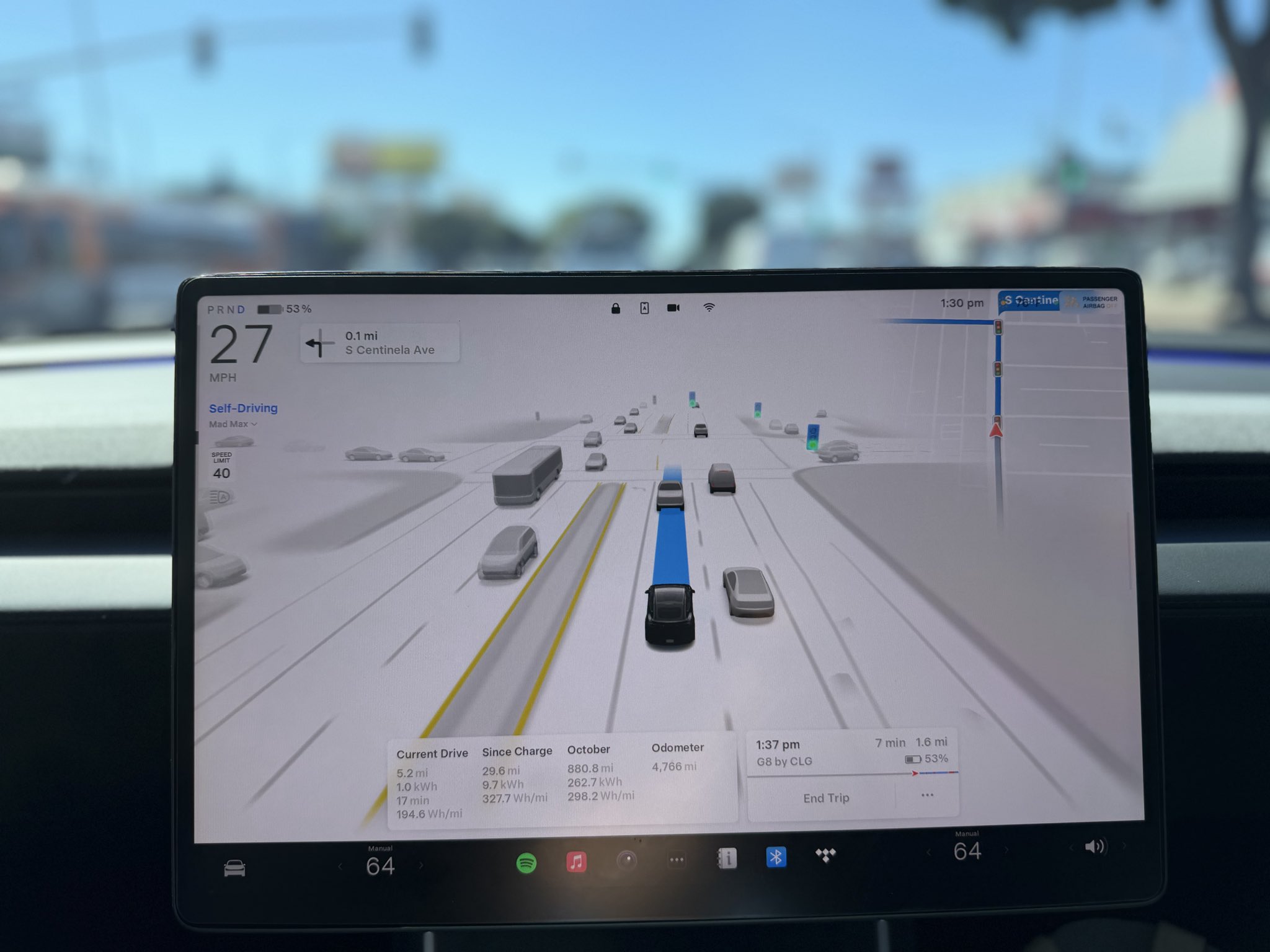

News
Tesla’s next-gen Model Y from Giga Berlin aims to redefine ‘German engineering’
Tesla’s next-generation Model Y from Giga Berlin in Germany may redefine “German engineering.” A Tweet from CEO Elon Musk shows the company aims to improve build quality down to the micron, a unit of measurement that is equivalent to one-thousandth of a millimeter.
“German engineering” is a phrase that has been around for decades and commonly refers to the precision and accuracy that German products are known for. In the automotive industry’s history, German vehicles have highly been regarded as the most luxurious, highest quality cars that money can buy. In the early years of industry and engineering, Germany had the best machines and the most advanced processes for building basically anything, but cars were the specialty. Strict standards and an attitude that aimed toward perfection made German vehicles the cream of the crop in the automotive industry.
Tesla Gigafactory Berlin render (Credit: Tesla)
This theory still holds true in today’s industry in many ways. While other companies and other regions have highly effective processes for vehicle manufacturing, Germany still has a certain mystique about it. With brands like Mercedes-Benz, Audi, and BMW, three of the most luxurious brands in the automotive market today, German engineering still holds a high standard.
However, Tesla has plans to reinvent the wheel when speaking about the term “German engineering.” In the last 18-or-so months since Elon Musk announced that Tesla’s first European Gigafactory would be in Germany, many developments have hinted toward Giga Berlin being the most advanced and most sophisticated factory that Tesla has in its arsenal. From a new, world-class paint facility to some of the most accurate automated machinery on the planet, Tesla is pulling out all the stops to keep up with Germany’s best brands.
In a Tweet earlier today, Musk said that Tesla is aiming for “extreme precision” with the next-gen Model Y. The company will aim for microns of accuracy, not millimeters, as Tesla aims to continue refining its manufacturing processes to make some of the highest-quality vehicles on Earth.
Aiming for extreme precision with next gen Model Y – microns, not millimeters
— Elon Musk (@elonmusk) May 18, 2021
In the past, Tesla has been criticized for poor build quality with some of its vehicles. Some owners have highlighted panel gaps or paint quality issues with their vehicles, which has led to an overwhelming misconception that Tesla produces lackluster vehicles. The truth is that all vehicle manufacturers have issues with build quality from time to time. Things as simple as an increased production rate can affect the quality of a vehicle. Some, however, like automotive veteran Sandy Munro, have stated that Tesla’s build quality has improved significantly over the years. Munro went from highly critical of the Model 3 during a teardown several years ago to overwhelmingly impressed with the new builds of the car.
“This car has improved significantly,” Munro said. “The paint is great; it’s very impressive.”
The accuracy that Tesla is aiming for with the next-gen all-electric Model Y crossover is extremely precise. A micron is one-thousandth of a millimeter, so it’s a unit that is not necessarily visible to the human eye. If Tesla can refine its manufacturing lines in Berlin to reach this level, the definition of German engineering may once again be reconfigured to include Tesla’s near-perfect build quality.
What do you think? Let us know in the comments below, or feel free to reach out to me directly at @KlenderJoey on Twitter or through email at joey@teslarati.com.

News
Tesla FSD Supervised ride-alongs in Europe begin in Italy, France, and Germany
The program allows the public to hop in as a non-driving observer to witness FSD navigate urban streets firsthand.

Tesla has kicked off passenger ride-alongs for Full Self-Driving (Supervised) in Italy, France and Germany. The program allows the public to hop in as a non-driving observer to witness FSD navigate urban streets firsthand.
The program, detailed on Tesla’s event pages, arrives ahead of a potential early 2026 Dutch regulatory approval that could unlock a potential EU-wide rollout for FSD.
Hands-Off Demos
Tesla’s ride-along invites participants to “ride along in the passenger seat to experience how it handles real-world traffic & the most stressful parts of daily driving, making the roads safer for all,” as per the company’s announcement on X through its official Tesla Europe & Middle East account.
Sign-ups via localized pages offer free slots through December, with Tesla teams piloting vehicles through city streets, roundabouts and highways.
“Be one of the first to experience Full Self-Driving (Supervised) from the passenger seat. Our team will take you along as a passenger and show you how Full Self-Driving (Supervised) works under real-world road conditions,” Tesla wrote. “Discover how it reacts to live traffic and masters the most stressful parts of driving to make the roads safer for you and others. Come join us to learn how we are moving closer to a fully autonomous future.”
Building trust towards an FSD Unsupervised rollout
Tesla’s FSD (Supervised) ride-alongs could be an effective tool to build trust and get regular car buyers and commuters used to the idea of vehicles driving themselves. By seating riders shotgun, Tesla could provide participants with a front row seat to the bleeding edge of consumer-grade driverless systems.
FSD (Supervised) has already been rolled out to several countries, such as the United States, Canada, Australia, New Zealand, and partially in China. So far, FSD (Supervised) has been received positively by drivers, as it really makes driving tasks and long trips significantly easier and more pleasant.
FSD is a key safety feature as well, which became all too evident when a Tesla driving on FSD was hit by what seemed to be a meteorite in Australia. The vehicle moved safely despite the impact, though the same would likely not be true had the car been driven manually.
News
Swedish union rep pissed that Tesla is working around a postal blockade they started
Tesla Sweden is now using dozens of private residences as a way to obtain license plates for its vehicles.

Two years into their postal blockade, Swedish unions are outraged that Tesla is still able to provide its customers’ vehicles with valid plates through various clever workarounds.
Seko chairman Gabriella Lavecchia called it “embarrassing” that the world’s largest EV maker, owned by CEO Elon Musk, refuses to simply roll over and accept the unions’ demands.
Unions shocked Tesla won’t just roll over and surrender
The postal unions’ blockade began in November 2023 when Seko and IF Metall-linked unions stopped all mail to Tesla sites to force a collective agreement. License plates for Tesla vehicles instantly became the perfect pressure point, as noted in a Dagens Arbete report.
Tesla responded by implementing initiatives to work around the blockades. A recent investigation from Arbetet revealed that Tesla Sweden is now using dozens of private residences, including one employee’s parents’ house in Trångsund and a customer-relations staffer’s home in Vårby, as a way to obtain license plates for its vehicles.
Seko chairman Gabriella Lavecchia is not pleased that Tesla Sweden is working around the unions’ efforts yet again. “It is embarrassing that one of the world’s largest car companies, owned by one of the world’s richest people, has sunk this low,” she told the outlet. “Unfortunately, it is completely frivolous that such a large company conducts business in this way.”
Two years on and plates are still being received
The Swedish Transport Agency has confirmed Tesla is still using several different workarounds to overcome the unions’ blockades.
As noted by DA, Tesla Sweden previously used different addresses to receive its license plates. At one point, the electric vehicle maker used addresses for car care shops. Tesla Sweden reportedly used this strategy in Östermalm in Stockholm, as well as in Norrköping and Gothenburg.
Another strategy that Tesla Sweden reportedly implemented involved replacement plates being ordered by private individuals when vehicles change hands from Tesla to car buyers. There have also been cases where the police have reportedly issued temporary plates to Tesla vehicles.
News
Czech Deputy excited for Tesla FSD, hints at Transport Committee review
The ANO party lawmaker shared his thoughts about FSD in a post on social media platform X.

Martin Kolovratník, a Czech Republic Chamber of Deputies member, has expressed his excitement for Tesla’s Full Self-Driving (FSD) after an apparent constituent called for a quick approval for the advanced safety system.
The ANO party lawmaker, who drives both diesel and EV, shared his thoughts about the matter in a post on social media platform X.
The official’s initial statements
Kolovratník kicked off the exchange with a post outlining his coalition’s efforts to scrap highway toll exemptions for electric vehicles and plug-ins starting in 2027.
“Times have changed. Electric vehicles are no longer a fringe technology, but a full-fledged part of operations. And if someone uses the highway network, they should follow the same rules as everyone else. That’s the basis of fairness,” he wrote.
He emphasized equity over ideology, noting his personal mix of diesel and electric driving. “For this reason, there is no reason to continue favoring one technology at the expense of another… It’s not about ideology, it’s about equal conditions. That’s why we clearly agreed within the new coalition: the exemption for electric vehicles and plug-ins will end in 2027. The decision is predictable, understandable, and economically sound.”
Tesla FSD enthusiasm
The conversation pivoted to Tesla’s FSD when X user @robotinreallife, who seems to be one of the official’s constituents, replied that other matters are more important than ending highway exemptions for EVs.
“I’m happy to pay for the highway, but I have a question about a much more fundamental matter: The Netherlands will approve the operation of Tesla FSD in February 26, a technology that has been proven to reduce accidents. The Czech Republic has the option to immediately recognize this certification. Do you plan to support this step so that we don’t unnecessarily delay?” the X user asked.
Kolovratník responded promptly, sharing his own excitement for the upcoming rollout of FSD. “I know about it. I like it and it seems interesting to me. Once we set up the committees and subcommittees, we’ll open it right away in that transport one. Thanks for the tip, I’ll deliver the report,” the official noted in his reply on X.
Kolovratník’s nod to FSD hints at the system’s potentially smooth rollout to Czechia in the coming year. With the Netherlands possibly greenlighting FSD (Supervised) in early 2026, Kolovratník’s commitment could accelerate cross-border certification, boosting FSD’s foray into Europe by a notable margin.









